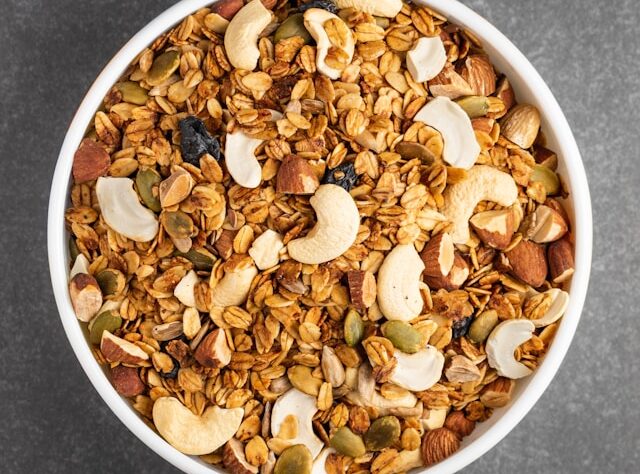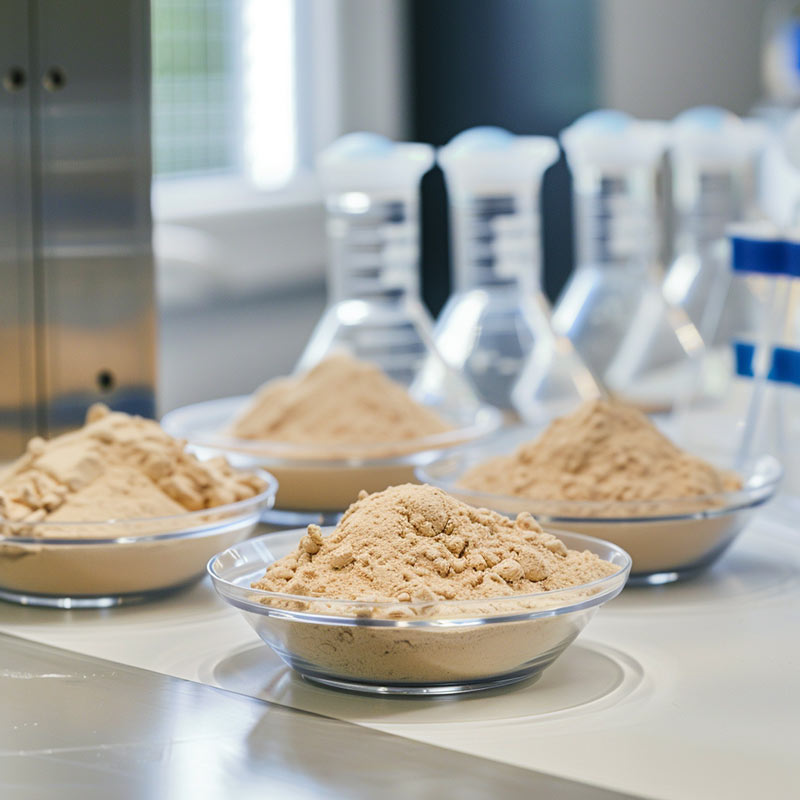Interview with Marc Girardelli: How to stay fit and healthy after 60
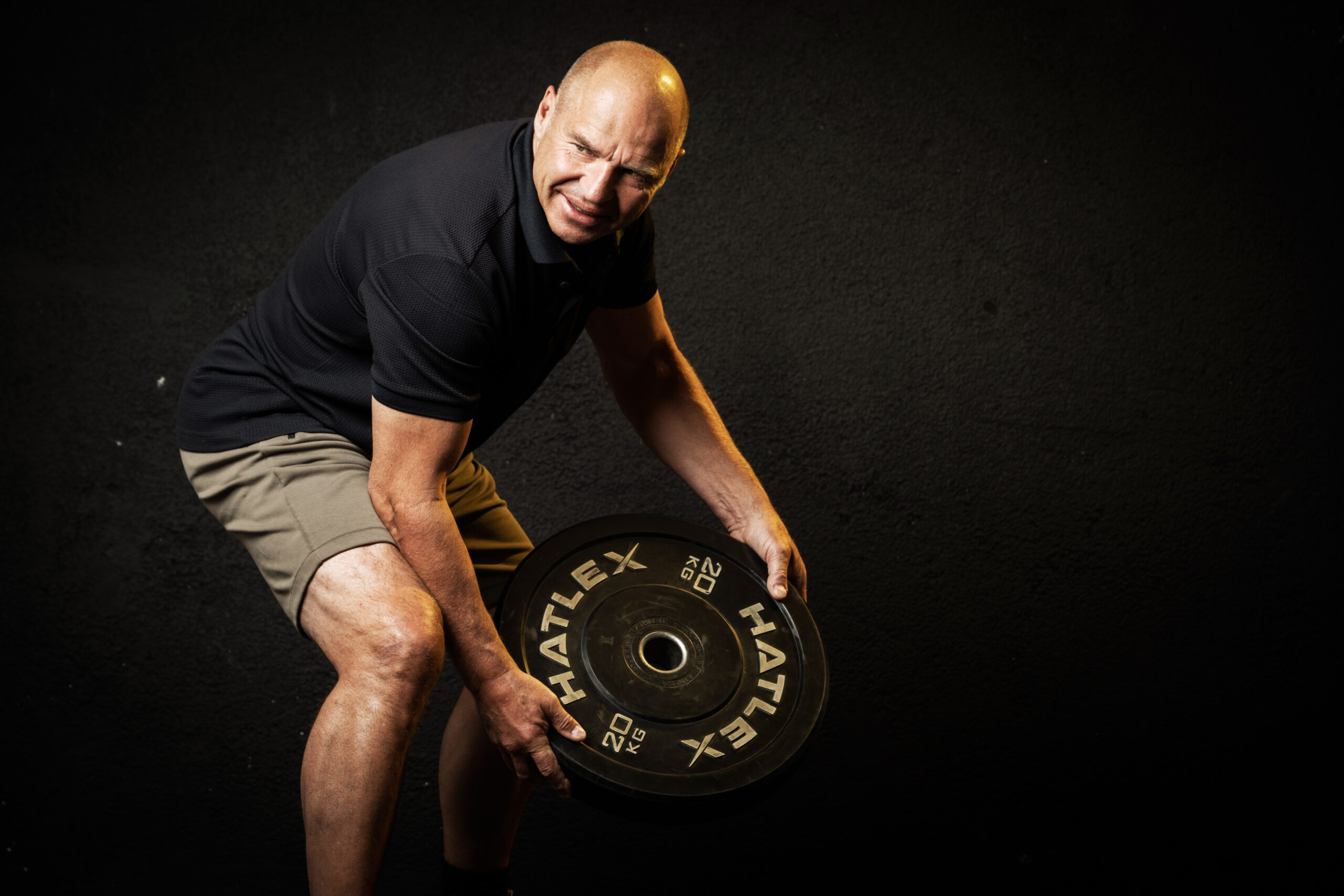
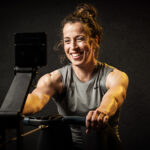
Fitness from 60
Everyday life as a gym

Motivation and joie de vivre
Celebrating small successes

Health despite challenges
Dealing with injuries
How do I stay fit afer 60 – despite the challenges?
Have you ever asked yourself: “How do I stay fit after 60?” As we get older, this question becomes increasingly important. Changes in the body, health challenges or injuries can be obstacles – but they don’t have to stop us from staying fit and active.
An impressive example is Marc Girardelli, a skiing legend and five-time overall World Cup champion. Throughout his career, he achieved tremendous success but also had to endure significant setbacks: 18 surgeries and a severe injury from a crash during the Super-G in Sestriere shaped his journey. He narrowly avoided a spinal cord injury and continues to deal with daily back problems as a result of this challenging incident. Despite this, Marc demonstrates that fitness and health in later life are, above all, a matter of mindset.
Today, at 61, he has reset his priorities: Strengthening his body, staying healthy and being active. His everyday life looks different than it used to at the top of the world, but training is still an integral part of it. In the following interview, Marc Girardelli explains how he manages to stay fit even after his intensive career, what routines he follows and what tips he has for an active life.
Interview: from competition to enjoyment
Marc, what does “being fit” mean to you today compared to your active career?
In the past, being fit meant being fast, strong and unbeatable. It was all about medals and records. But today, ‘being fit’ has a completely different meaning. For me, at 61, it means living pain-free, having energy and being able to climb the stairs without getting out of breath.
After 18 surgeries and an injury that left me narrowly avoiding a spinal cord injury and losing 25% of my mobility, I had to completely change my mindset. My focus is now on strengthening the muscles that support and stabilize my body.
My training program is simple: 10 to 15 minutes in the morning with abdominal exercises, gymnastics and light strength training. I often use YouTube videos – they are practical and easy to implement. The most difficult step is always getting started in the first place. But once I’m on the mat, I’m off and running.
Has your view of sport and health changed as a result of your injuries?
Absolutely. My many injuries have made me realize how important it is to actively do something for your body. The body gives up faster than you think if you neglect it – and this process accelerates after 60. Targeted muscle training becomes indispensable at this age, as natural muscle loss progresses more quickly.
But I see it in a positive light: every little improvement counts and makes me feel good. It’s not about making huge progress, but about keeping control of your own body. This mindset motivates me to keep going, even on difficult days.
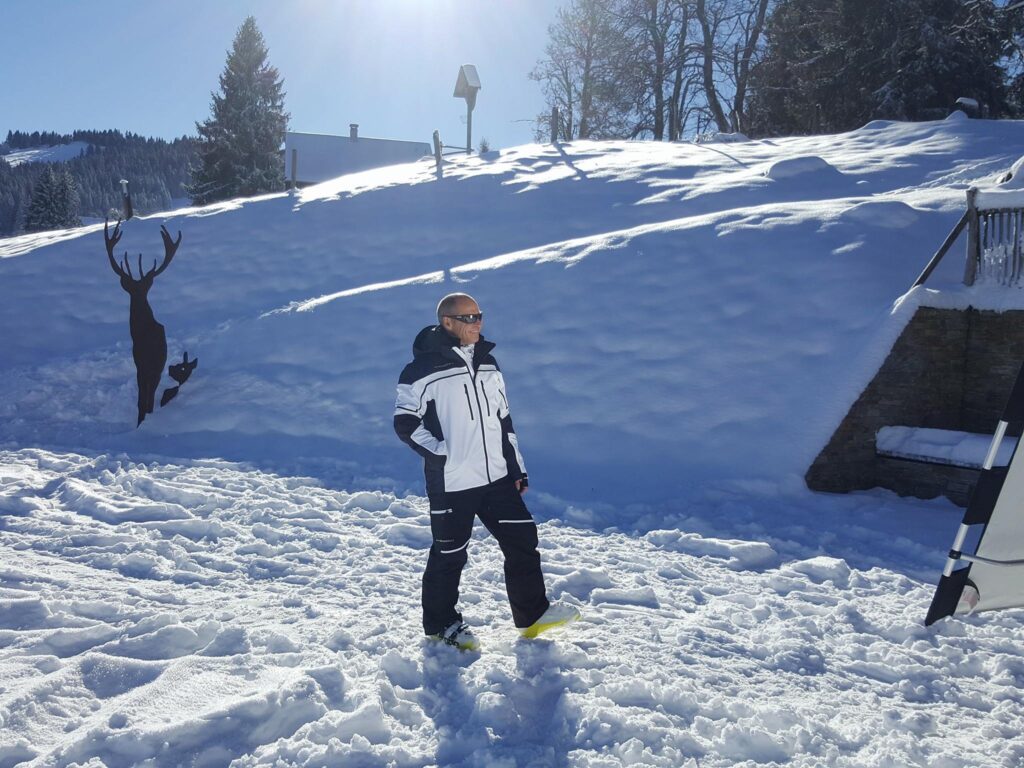
Everyday life as a gym
How do you manage to integrate exercise into your everyday life?
I make it easy for myself. Exercise becomes part of my everyday life – not a complicated training plan, but lots of little opportunities. Stairs instead of an elevator sometimes even running, or a few squats in between.
When hiking with my partner, who is fitter than me, I have a trick: I smuggle a few stones into her rucksack (laughs). That gives me a chance to keep up and she gets an extra workout.
The key is to make exercise a habit. A short exercise here, a few floors there – it all adds up. It’s crucial to stay active, especially after 60, because the body doesn’t forgive long breaks.
Do you have any tips for people who are just starting out?
Start small – and I mean really small: a short walk or light stretching can be the perfect start. It’s not about making big progress straight away, but about getting used to the movement.
The most important thing is to keep at it and experience the joy of exercise. Activities such as yoga, hiking or simple exercises at home can help you stay motivated in the long term. The key is regularity: fitness can be gradually increased with small, steady steps – and the positive effects are quickly noticeable.
You have had 18 operations. How do you deal with injuries today?
After my active career, I learned a crucial lesson: I must actively care for my body instead of ignoring its complaints. The partial paralysis on my right side, which has cost me 25% of my mobility, demands daily effort and attention.
My focus is on strengthening muscles and activating deeper structures. I use modern technologies such as EMS training (electrical muscle stimulation) and microcirculation therapies like Bemer. These methods help me to train areas of my body that I would otherwise not be able to reach.
What I have also learned: Staying active is the be-all and end-all – even if it’s difficult. The body doesn’t forgive long breaks, especially after 60. Regular exercise not only keeps me fit, but also helps me to prevent pain and maintain my quality of life. My tip for everyone: keep at it and never stop moving!
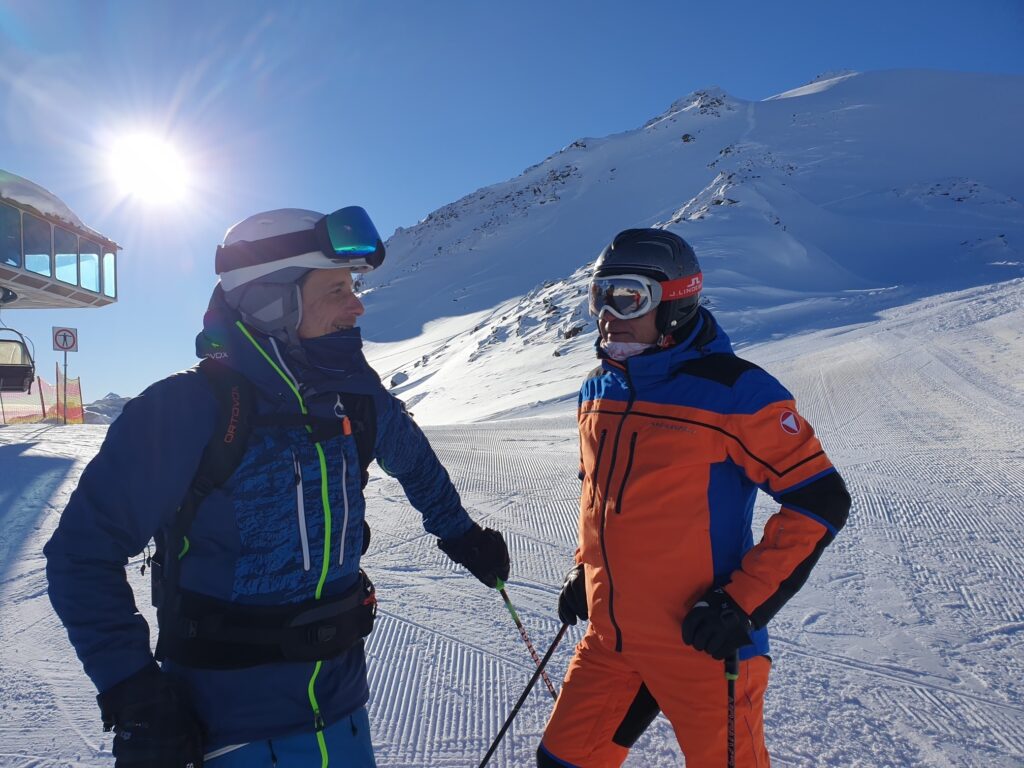
The best sports for over 60
What sports do you recommend to stay fit?
Swimming is ideal – it’s easy on the joints and excellent for mobility. Hiking is also perfect, especially with a cable car for the descent on longer tours.
For a bit more of a challenge, I recommend cross-country skiing. It provides a full-body workout, is easy on the joints, and suits all fitness levels. I often go cross-country skiing with my partner – being out in the fresh mountain air is an incredible boost for both body and mind.
If you are brave, you can also take part in ski tours dare. But always with caution: it’s not about setting records, but about enjoyment and health. The balance between strength and endurance training is important – especially from the age of 60.
Skiing today: enjoyment instead of competition
What role does skiing still play in your life?
Skiing is and remains one of my greatest passions. It used to be about speed and competition, but today it’s all about enjoyment. For me, skiing is much more than a sport – it’s an experience. The fresh mountain air, the snow-covered peaks and spending time with friends make it special. Especially after 60, hobbies like this are essential for me to stay active and healthy. They help me to stay fit, while at the same time I can enjoy the peace and beauty of nature.
And yes, I admit it: the snack at the hut is also part of it for me (laughs)! It’s the perfect balance between exercise and enjoyment that makes skiing something very special.
Marc still skis today and remains active. You can find out more about what he does today and how he lives his passion for the sport on his website.
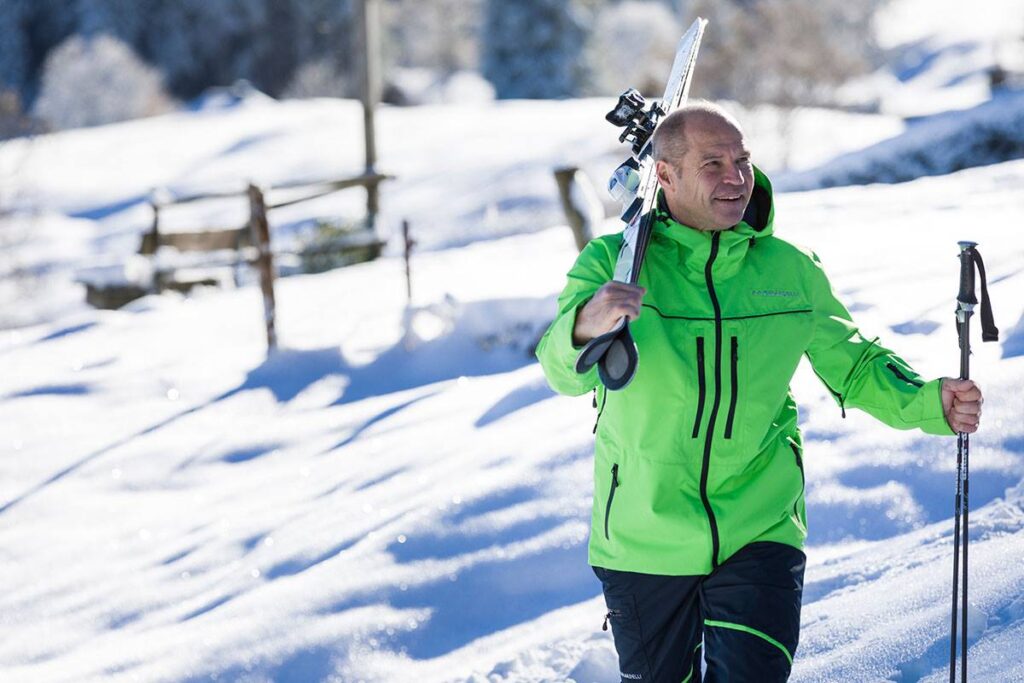
Marc’s tips for healthy ageing
What would you like to give our readers in conclusion?
The most important thing is to keep at it. It’s not about achieving great success in the shortest possible time, but about taking small, regular steps. It’s better to do 10 to 15 minutes of exercise every day than two hours at full throttle once a week. These small, continuous steps add up and bring the greatest success in the long term – regardless of age. It’s not about being perfect, but about feeling comfortable and active. And always remember: even the smallest steps count. If even I, as a former ‘ski machine’, have understood that, then you can do it too!
Another decisive factor is nutrition. Your body can only perform and feel good if you give it the right building blocks. Fast food and sugar are simply not enough. I have tried a lot in my life and have found that dietary supplements can be a useful support.
For me NoDoubt an example that perfectly complements my diet. Every morning I start my day with this drink, which tastes like fresh orange juice. It gives me energy, improves my sleep and increases my resilience. Since incorporating NoDoubt into my routine, I feel fitter and better prepared for whatever the day brings.
I always drink it before my coffee or breakfast – it’s an integral part of my morning routine. And the best thing about it: I like the taste. That’s just as important to me as the effect. I’ve tried a lot of things that might have been great, but didn’t suit my taste. With NoDoubt, I have found the perfect balance between enjoyment and health.
In the end, one thing counts: Start small, keep at it and find what works for you. With this attitude, you’ll feel fit and ready for anything that comes your way!
